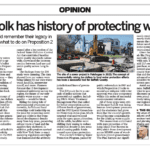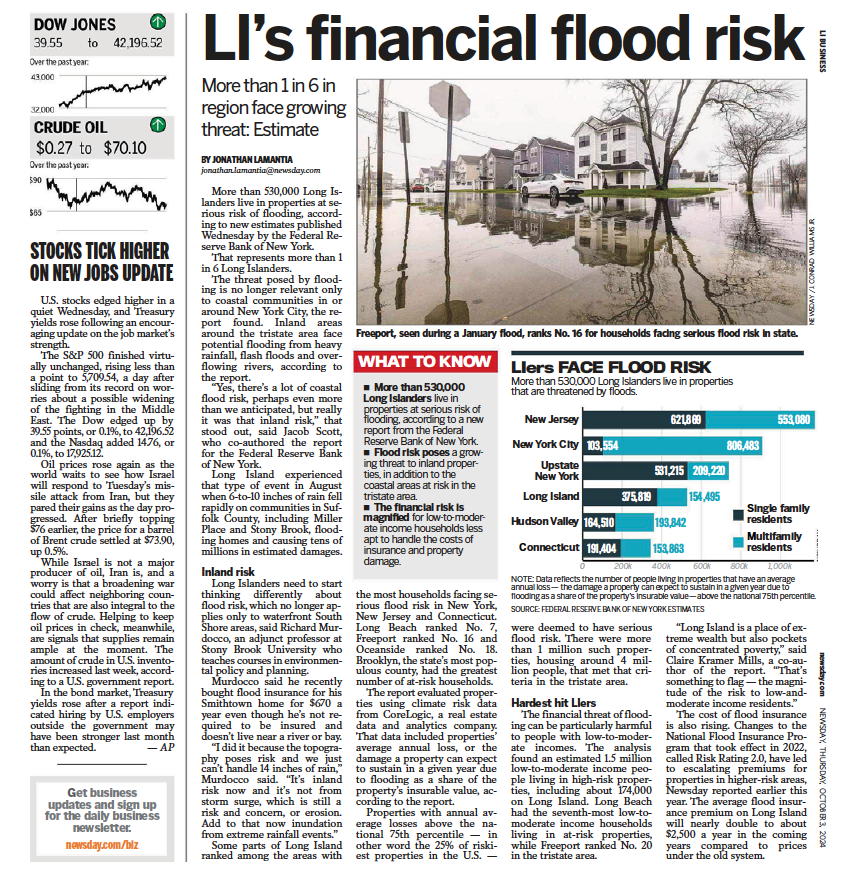The following was written for LIBN’s Young Island:
Some Long Islanders don’t know a good thing when it falls into their laps.
Recently, it was reported that Long Islanders are concerned about the traffic impacts that the Long Island Rail Road’s double track project, which will add a second track between Farmingdale and Ronkonkoma, will have on vehicular traffic. The project is expected to impact 20 grade crossings.
As we all know, traffic on Long Island is awful. This unfortunate fact should not impact our ability in any shape or form to increase the capacity and effectiveness of our aging mass transit infrastructure. Instead of blaming the LIRR for our traffic woes, why not attack the problem head on and address the root cause of our traffic concerns: over-development in areas where it isn’t appropriate, and the capacity and level of service of our aging roads.
Ideally, these 20 grade crossings impacted by the double track project would be elevated, thus eliminating the need for crossing gates. But here is a reality check: Our roads can barely handle traffic projected for 1985, let alone 2013. If we’re all so concerned about traffic, let’s do the right thing and make Route 347 a limited access highway, adding more lanes where they are needed.
As a planner, conducting more studies and gathering data before taking action is always something I’d advocate for. However, there is a fine line between sound planning and reinventing the wheel. All too often, non-profit advocates and government officials study the same issues over and over. With the double track project, the issue was studied in the 1960s when full build-out of Long Island was a possibility, again in the 1980s when the electrification of the main line was studied and implemented, and it was studied again before this project was implemented. That’s a lot of studies for a project that is almost universally considered a good thing. Imagine the studies needed if the project was considered controversial.
Traffic impacts are a serious concern. Civics and politicians must realize that when every project proposed is said to create “too much traffic,” they are lessening the legitimacy of the argument. Mega-projects such as Wolkoff’s Heartland in the Town of Islip and Taubman’s Mall at Oyster Bay in Syosset have legitimate traffic concerns; these project sites have access roads that simply cannot handle the burden. But with each legitimate traffic concern, there are 20 others that aren’t. Every time a 7-Eleven is proposed in a commercial strip, there isn’t a real traffic concern. In this instance, additional traffic at an already overburdened crossing isn’t a big deal. If it is a huge deal, increase the capacity of the roads, which will create more traffic and more NIMBY nay-saying.
Further, we must realize the importance of securing mass transit funding. Considering the amount of political gridlock in Congress, it’s very impressive that our local representatives were able to secure federal and state money at all. County leaders should be appreciative as well. I understand that local government leaders must serve their constituents (and sometimes pander), but it always amuses me how they are surprised when a project is about to break ground that there will be impacts. Instead of complaining when the process is essentially finalized, why not pay attention to the land-use issues that are decades old in your district? Double track is nothing new – the project has literally been in the works for decades.
The project is shovel-ready, and likely to begin later this year. For once, Long Islanders must start thinking regionally. When it comes to Nassau and Suffolk counties, Pogo said it best: Long Island – We have met the enemy, and he is us.
Richard Murdocco is a digital marketing analyst for Teachers Federal Credit Union, although the views expressed in this post are Murdocco’s alone and not shared by TFCU. Follow him on Twitter @TheFoggiestIdea, or email him at rich.murdocco@gmail.com.









